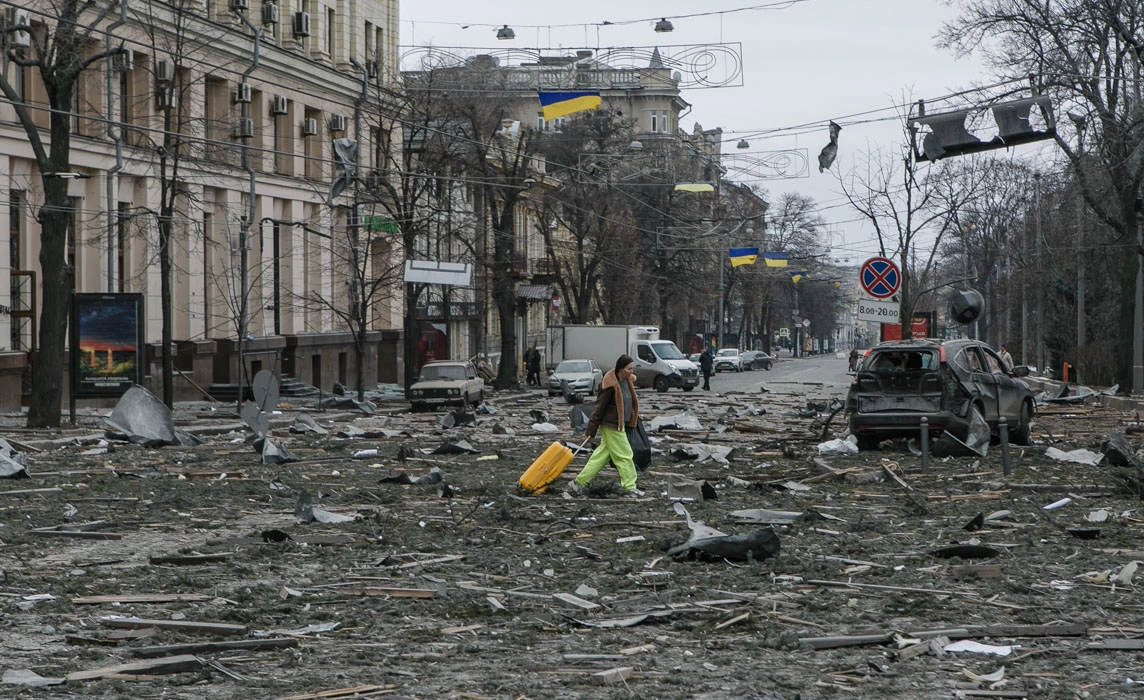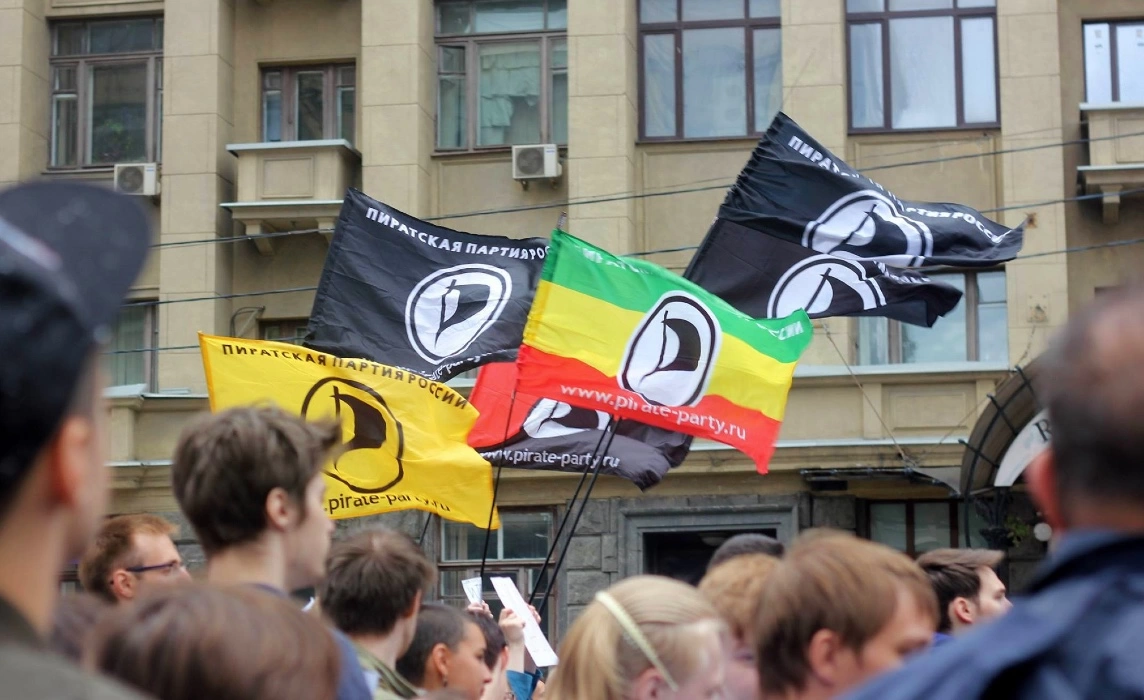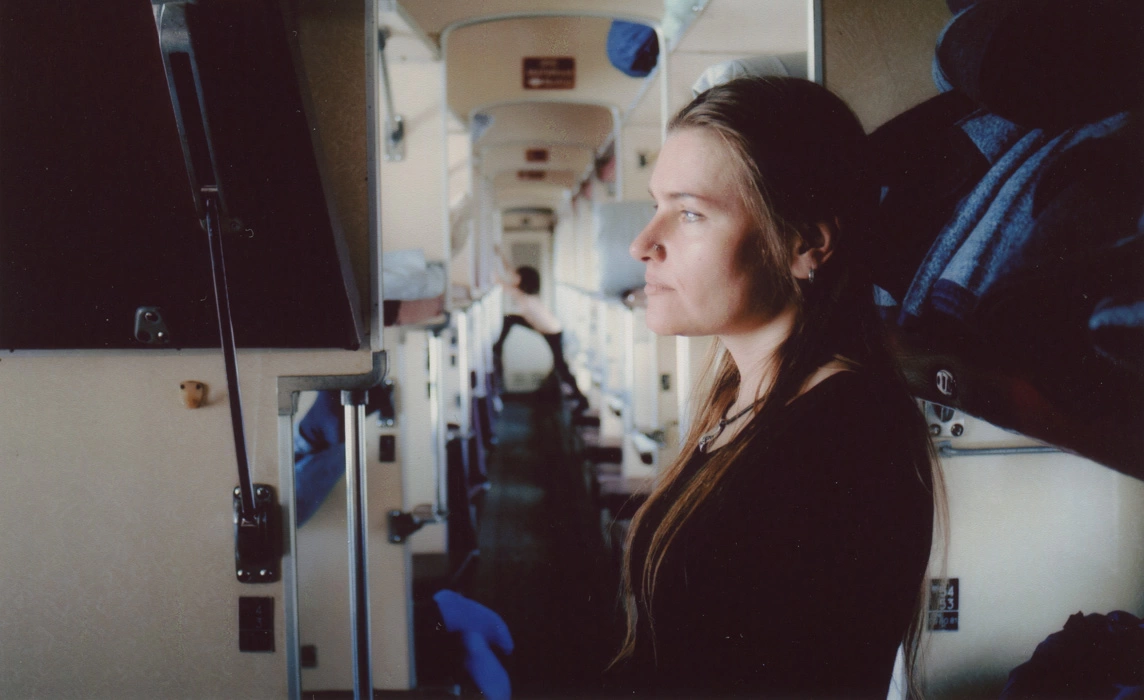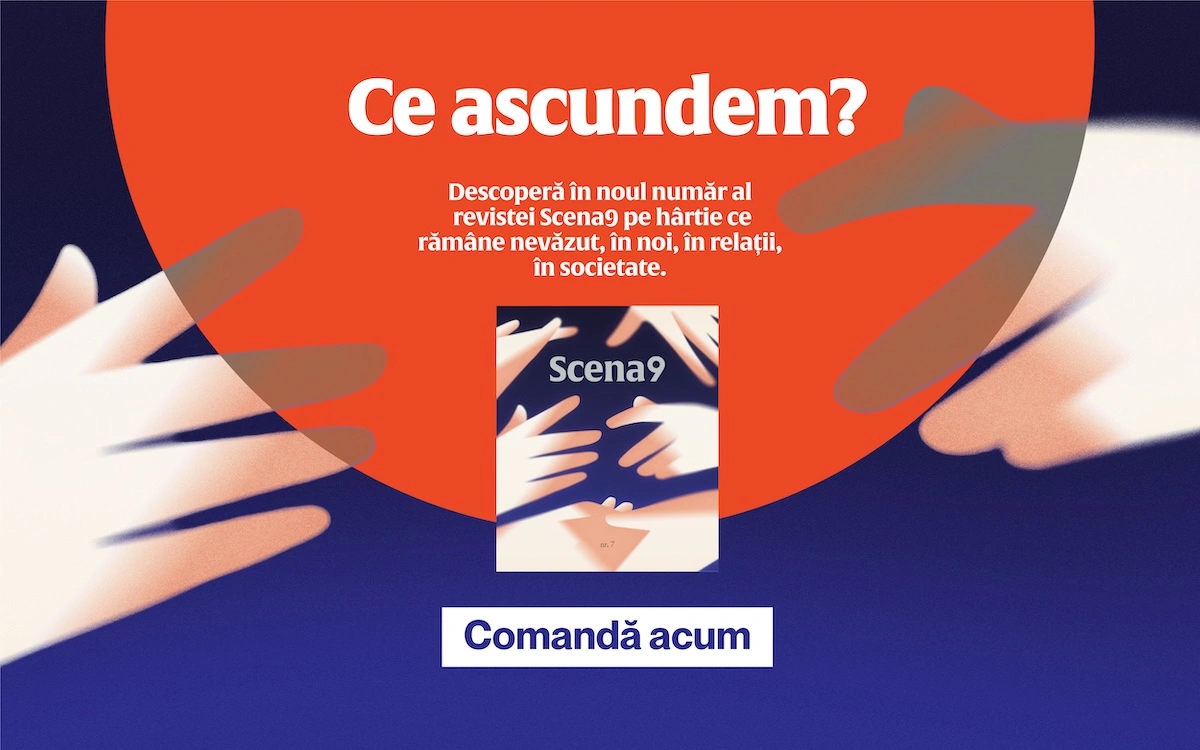In December 2020, I published an ample report about the mix of good and evil within the Children of the Sun community in Dumbrava de Sus, Hunedoara County. Each year, roughly 1,000 people, both Romanian and foreigners, visit the meditation center founded in 1997 by former miner Ardelean Fărcaș. They all share an interest in Vipassana, a meditation technique that historian Yuval Harari and artist Marina Abramović have also practiced.
The Dumbrava de Sus center, however, is not licensed, and leader Ardelean Fărcaș, also known as Adi de la Brad, is not a certified Vipassana teacher, as he himself claims, according to representatives of the international dhamma network. Under a false name, he teaches a method of his own, which blends conspiracy theories, healing inventions, and abuse.
Some of those who attend the meditation courses decide to stay in the Children of the Sun community, in order to live in nature, grow their own food, find themselves, and support others in doing the same. Among those who relinquish living in society and move to the mountains there are people from all social classes, from youngsters fresh out of high school, to well-known artists or PhD holders.
After my initial article was published, several members left the Children of the Sun, because they realized their lives looked entirely different from what they had initially imagined. I spoke to seven former Children of the Sun (who left both after publication, as well as before), to understand what made them call it quits, but also what it was like for them to start their life all over, in the society they had run away from. I published five of their testimonies.
The former members are accusing Adi de la Brad of sexual abuse, emotional abuse, exploitation through labor, being constrained against seeing a doctor, declaring him their children’s father, and preempting them from going to school. We have information there is an ongoing investigation, but the authorities have refused to confirm this.
Our first article also documented the leader’s emotional abuse--he would tell people when they are allowed to have sex or eat, recommend them to use objects and potions created in an improvised lab instead of going to the doctor, and include conspiracy theories in the meditation practice. This article, however, contains a confession of explicit sexual abuse, as well as substantiations of previous allegations.
This is the first time when several Children of the Sun publicly and assertively reveal their lived experiences, even though they had initially harbored numerous fears fueled by the leader’s insinuations that something bad would happen to them. They’re not afraid of using the word ‘cult’ and repeatedly state that they don’t want to harm the people who are still at Dumbrava de Sus through their confessions. On the contrary, they want to encourage them to trust themselves even at the times when they also become aware of Adi de la Brad’s manipulation and abuse. “You’re not insane, you really are being abused! This is not spiritual evolution, it’s humiliation,” Cristina Schumacher would like to tell them. She’s 41 years-old and spent 11 of those years living with the Children of the Sun.
At the same time, they are aware that some of them have very few options. For instance, teenagers who grew up within the community have confessed to them that they would like to leave, but have nowhere to go. Cristina witnessed several situations in which Adi would tell underage women, “‘It’s all right, you’ll grow up and have a baby with me.”
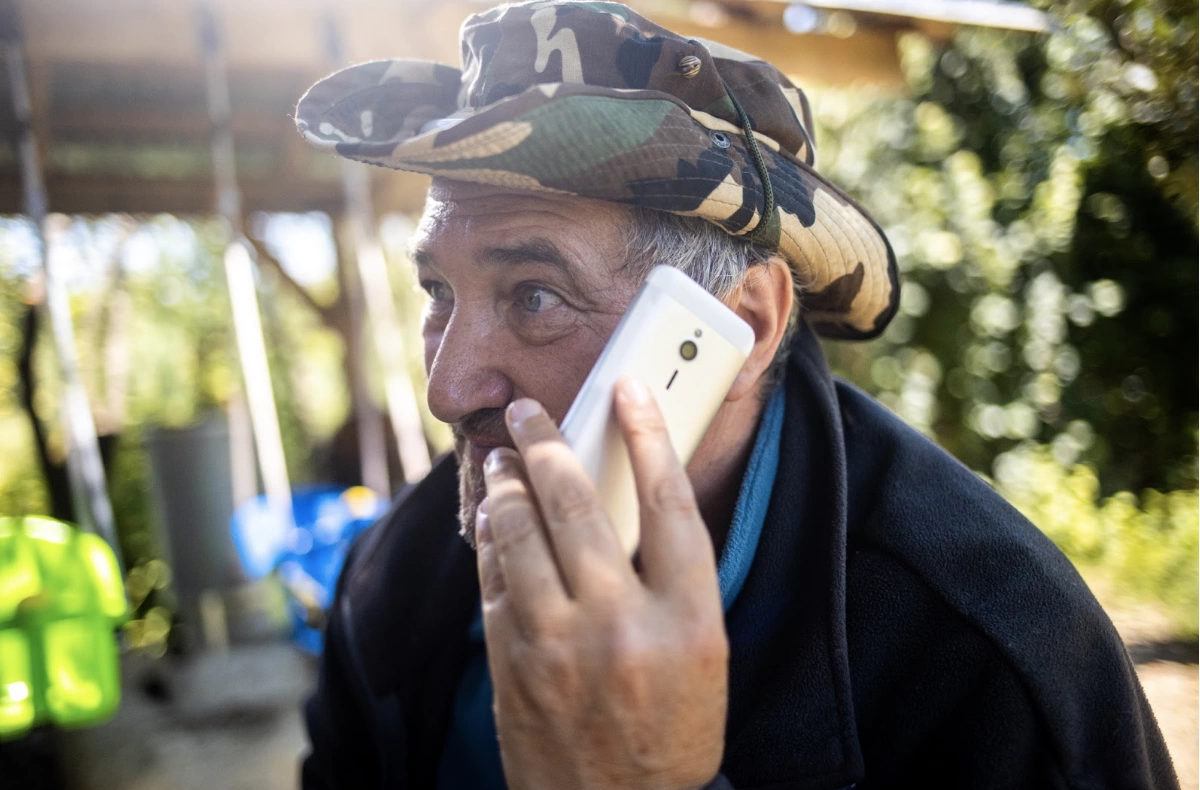
I also talked to parents of some former Children of the Sun members to understand what it was like for them to have their children there for years on end. “I agreed to talk because I don’t want other children to go through what my child went through. That’s a place where they ruin people,” warns the mother of a former member, who wanted to remain anonymous, as she’s afraid Adi de la Brad might take revenge on her. She didn’t see her child, who lived in the community, for five years, because Adi had turned them against her.
“The spiritual father”
“I have both perspectives: I was in there, brainwashed, and I also got out and saw the truth about what went on there and he needs to be stopped and made to pay (editor’s note: Adi de la Brad). He’s ruined a lot of families and lives,” says Cristina Schumacher.
Cristina had just graduated from the Faculty of Foreign Languages with a double major in English and German, when she moved into the community. The year was 2004, she was 24 years-old. She had grown up with an alcoholic father, who often yelled at her and called her ‘stupid,’ so she had developed a short temper for anger and had low self-esteem. Her mother recommended that she attend a meditation class in Dumbrava de Sus, after she had also attended one and felt it had helped. Ever since she was a teenager, Cristina would accompany her mother to various yoga classes, in a common attempt to get some relief from the atmosphere at home. Later on, her mother would spend years blaming herself for taking her daughter to Children of the Sun.
The young woman called Adi de la Brad pops, because he was much older than her and she saw him as a spiritual parent. Pops, however, was sexually harrassing her. He would fondle her breasts and her butt without her consent and blackmailed her by falsely claiming her gynecological affliction would worsen if she didn’t have sex with him. At the same time, several women in the community pressed her to sleep with him, as this was purportedly the only way for her to heal, evolve, and be karmically cleansed, just like them. “Someone at the center had made sure to read in my birth chart that I was in harems in previous lives.”
Just like the other members who provided free farm work and meditation center maintenance, Cristian was totally dependent on Adi, both financially and emotionally. She thus felt pressured into having sexual relations with him for years on end. Today, she calls them “consented rapes.” Later on, when the man allowed her to hold the meditation classes, he justified his sexual abuse. “‘Do you see now how that all had a point, so you could hold classes, have my vibration, hold the classes with my vibration, with the vibration of the center?’,” the leader told her. Several former members maintain that Adi de la Brad promises women “spiritual evolution” and certain privileges within the community, in exchange for sexual contact.
Adi de la Brad denies the sexual abuse accusations. “What’s been said is incorrect. It’s not true and whoever said it needs to come in front of all the people, with everyone present. These lies are serious, these lies will have consequences. (...) Man, in my house, if you want to observe a certain discipline, you will, because if you don’t you’ll definitely take revenge on me.”
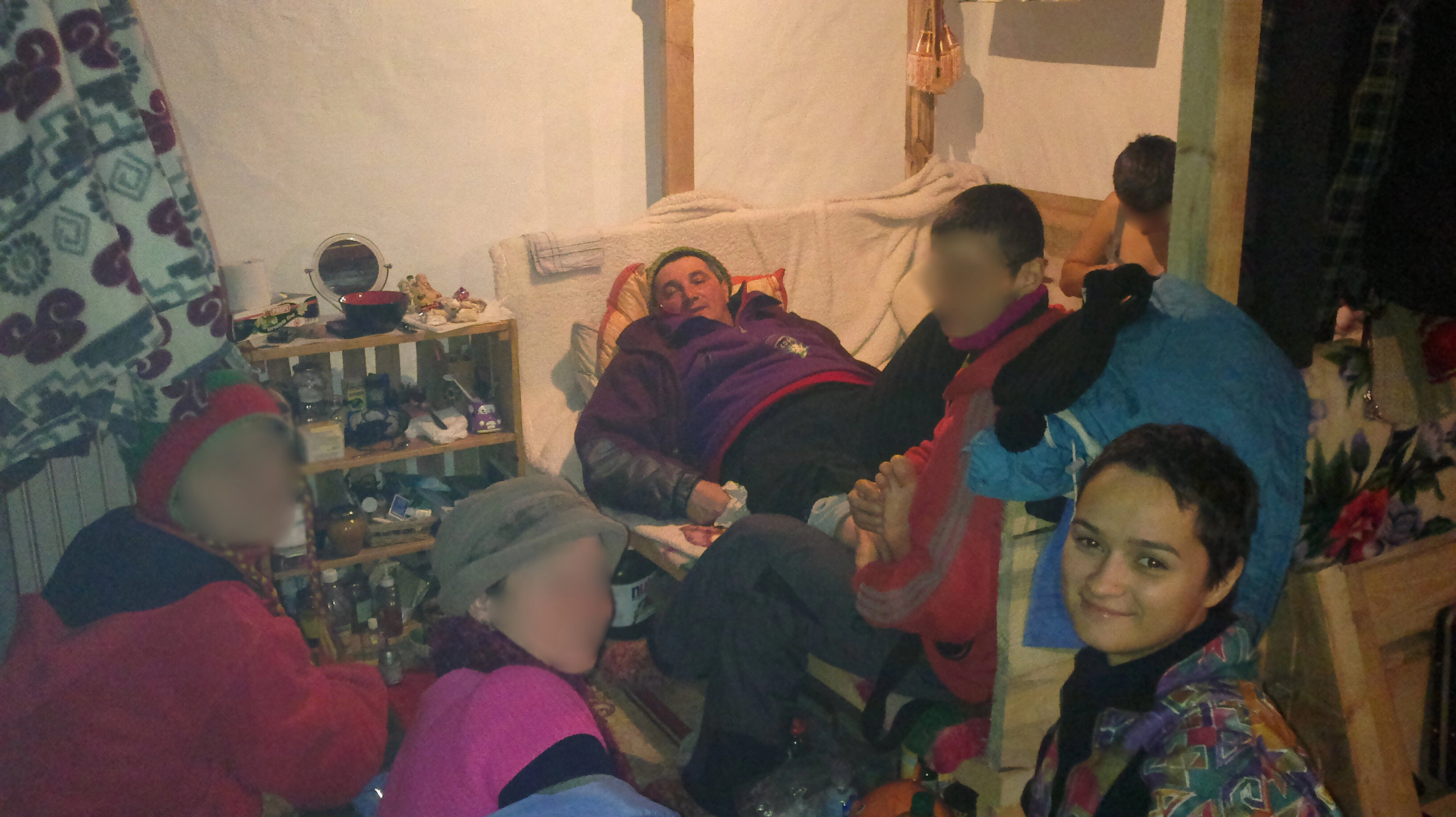
After having a child with her partner, also a member of the community, Cristina was convinced by Adi to register the baby under his last name, Fărcaș, to grant him “energetic protection.” Cristina says Adi also pressed other parents there to do the same, in order to keep them tied to him for as long as possible. After a lawsuit that lasted for a year, Cristina removed her son from Ardelean Fărcaș’s name. Adi de la Brad says he placed children who are not his in his name, including Cristina’s, “so that they’re not left to fend for themselves, so that they have a father.”
Damia Salloum, 32, a former singer, arrived at Children of the Sun in autumn 2018, right after launching the hit single “Adidașii” with Șatra B.E.N.Z., whose video now has over 18 million views on YouTube. Despite the success, she was burned out after years of touring, sleepless nights, alcohol, and weed, so she was instantly charmed by the meditation, the tranquility, and the people who worked together in the middle of nature.
She got pregnant with her partner within the community and struggled through days of labor, as Adi insisted that all the women give birth there. Children brought into the world through C-sections didn’t stand the same chance at spiritual evolution as the others, he often told them. After she eventually gave birth through an emergency C-section at the hospital in town, the leader kept telling Damia that her son has a weird cry, as he was allegedly looking for metta (positive energy and kindness toward others within Vipassana meditation). It took her a long time to emotionally heal after the birth, because of the constant blame-mongering the leader subjected her to. Adi de la Brad would often make her meditate alone in the “Plasmatic Module,” a rectangular wood and metal booth he had invented, of which he claims it can heal grave illnesses or even bring people back to life.
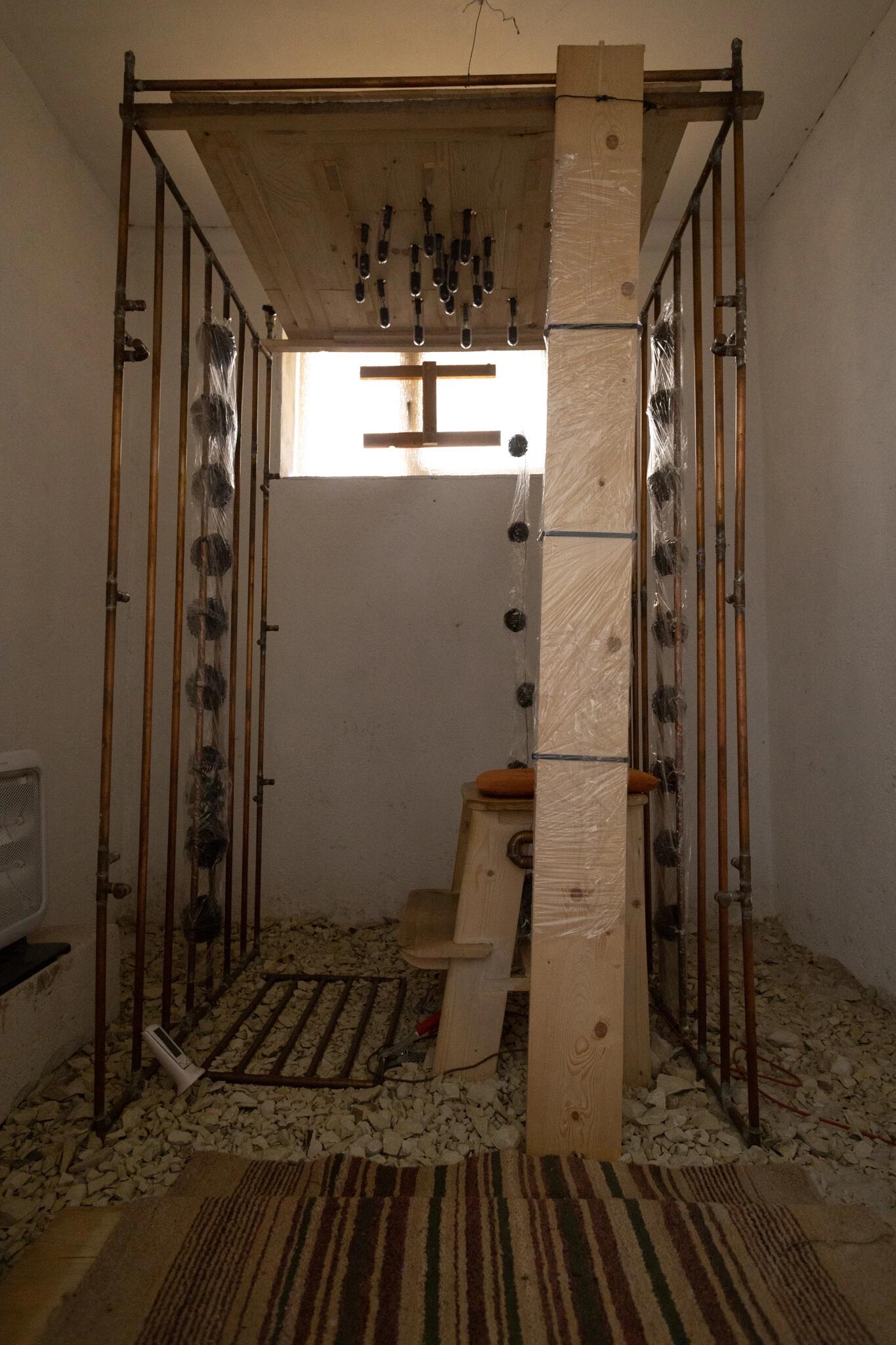
Last August, in a Children of the Sun Facebook group, strictly reserved for former students, someone in the community posted two photos of Adi de la Brad lying down, his eyes closed, and livid, with the caption, “A cycle has ended, we wish him a beautiful passage to the other side.” Shortly after that, someone else commented, “Don’t worry, Adi has been taken to the Module and we trust he’s going to be alright. He will return among us. The Module has helped him come back many times. He’s been through this experience before.”
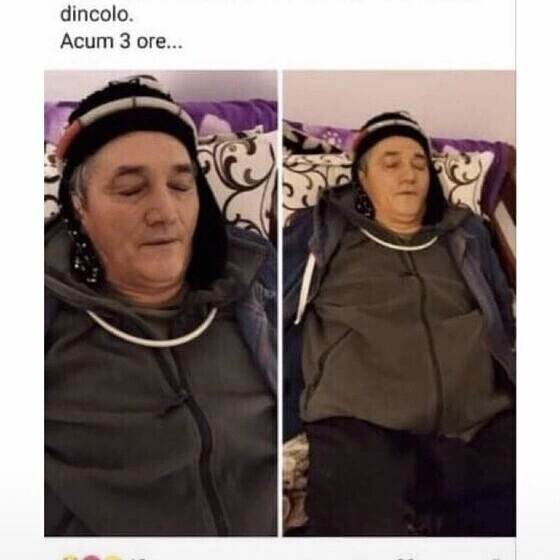
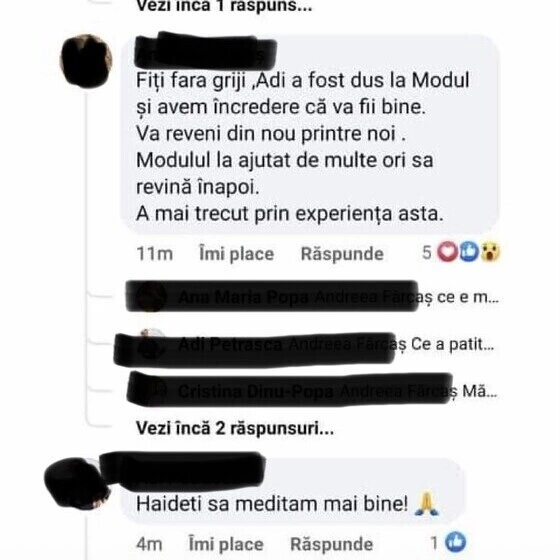
The former members I talked to believe that the leader staged the story in which he died and came back to life, in order to promote the “magical” properties of the objects he invented and his own “immortality” in particular. Aside from Dumbrava de Sus, the “Plasmatic Module” can be found in seven locations in București, Brașov, Sibiu, Piatra Neamț, and Cluj, and each session costs 80 lei.
Asked over the telephone if it’s true he had died this summer and was resurrected by the plasmatic module, Adi de la Brad told me, “Man, I definitely died. But it was on Christmas, not last summer.”
Another item credited with “healing” properties is the “Ark,” whose name is a loanword from the religious repertoire. It looks like a large plastic ball and Adi claims it charges people with energy, makes them wiser, and develops their attention and positive spirit. Besides, it also allegedly protects plants and animals “of solar, nuclear, and 5G radiation.” The Ark supposedly saved Adi’s life in the past.
Because the huge plastic ball within the community could not be taken home, Adi also invented “mini Arks.” They look like pickle barrels out of which a few vials are sticking out, and their price ranges from RON2,000 to RON4,000 (roughly 400 to 800 Euro). These items, as well as many others that have nothing to do with science, are sold on the website energetik.ro.
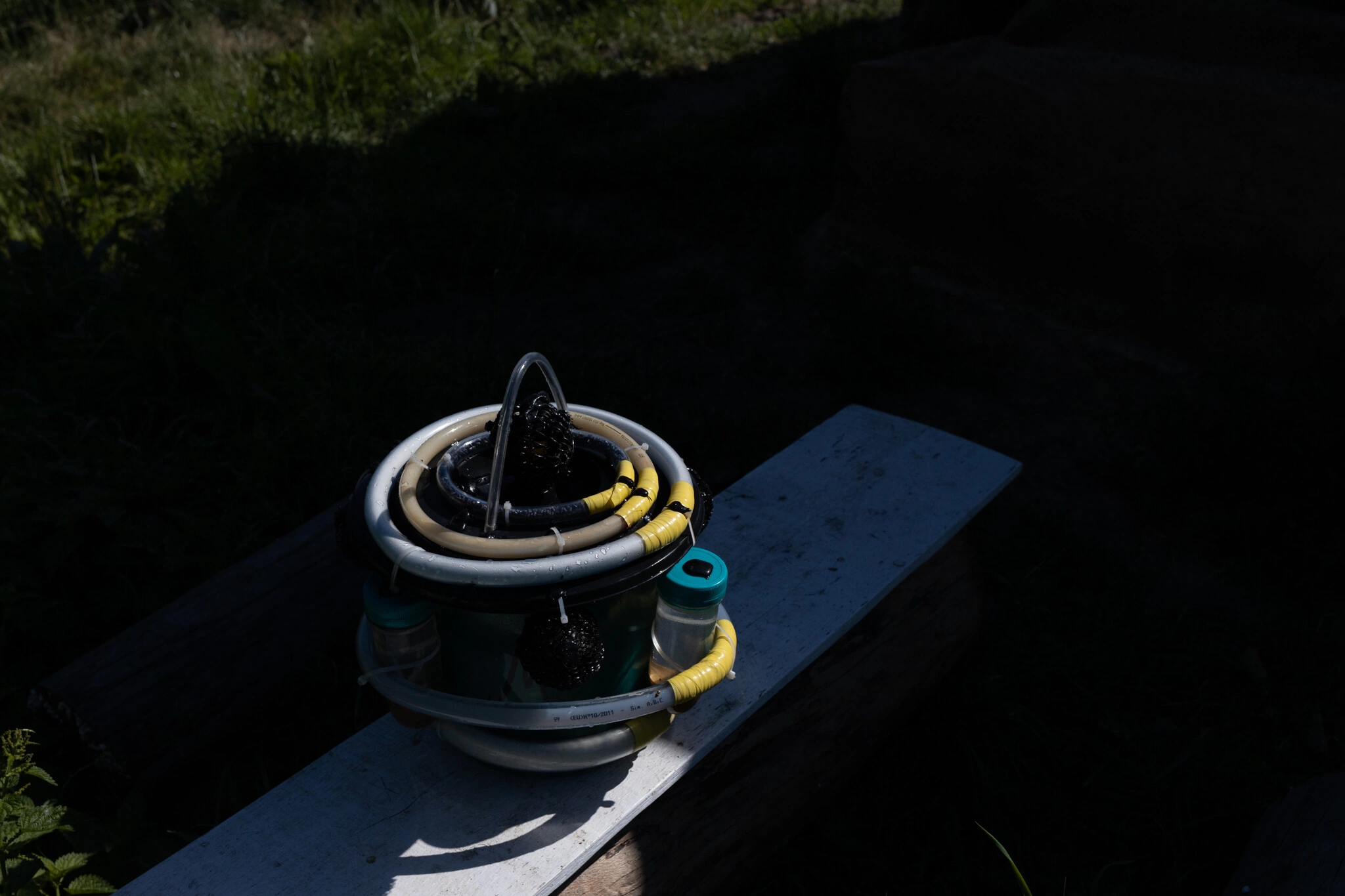
In the Children of the Sun community spirituality and conspiracies are entwined and those who follow this phenomenon have unearthed “conspirituality,” a concept created in 2011 by researcher Charlotte Ward and David Voas, head of the Social Sciences Department at University College London. The two show that this phenomenon is on the rise worldwide and that it stems from a disappointment in politics and the increasing popularity of alternative worldviews.
Lucian Țurlică, a 30-year-old Constanța native, worked the land from morning till evening and meditated daily under the guidance of Adi de la Brad. After two years of living in the community, he checked himself into the Obregia Psychiatric Hospital with psychotic episodes. He says he received a diagnosis of acutely delusional psychotic disorder and the doctors linked the psychotic episodes with the drugs he had taken before moving into the community. His current therapist believes extreme meditation and work took a toll on his health. “Before, I had tried LSD, mushrooms, Ayahuasca, bufo alvarius, kambo (editor’s note: various types of hallucinogens), a lot of stuff, in the hope I would get better. I wanted to be happier,” says the young man who’s been battling depression ever since childhood.
Before reaching the Children of the Sun, he’d started International Relations at university, at his mother’s insistence, but had given it up because he didn’t like it, he’d worked as assistant store manager in Bucharest and Constanța, and in a factory, on a cleaning machine, and as a waiter in England. “There was something inside me that wanted more than this. [...] I kept asking myself questions, I was telling myself that this is not what life is about, that I don’t see my life as work, retirement, and then death.” The Children of the Sun community seemed to be the answer to his quest.
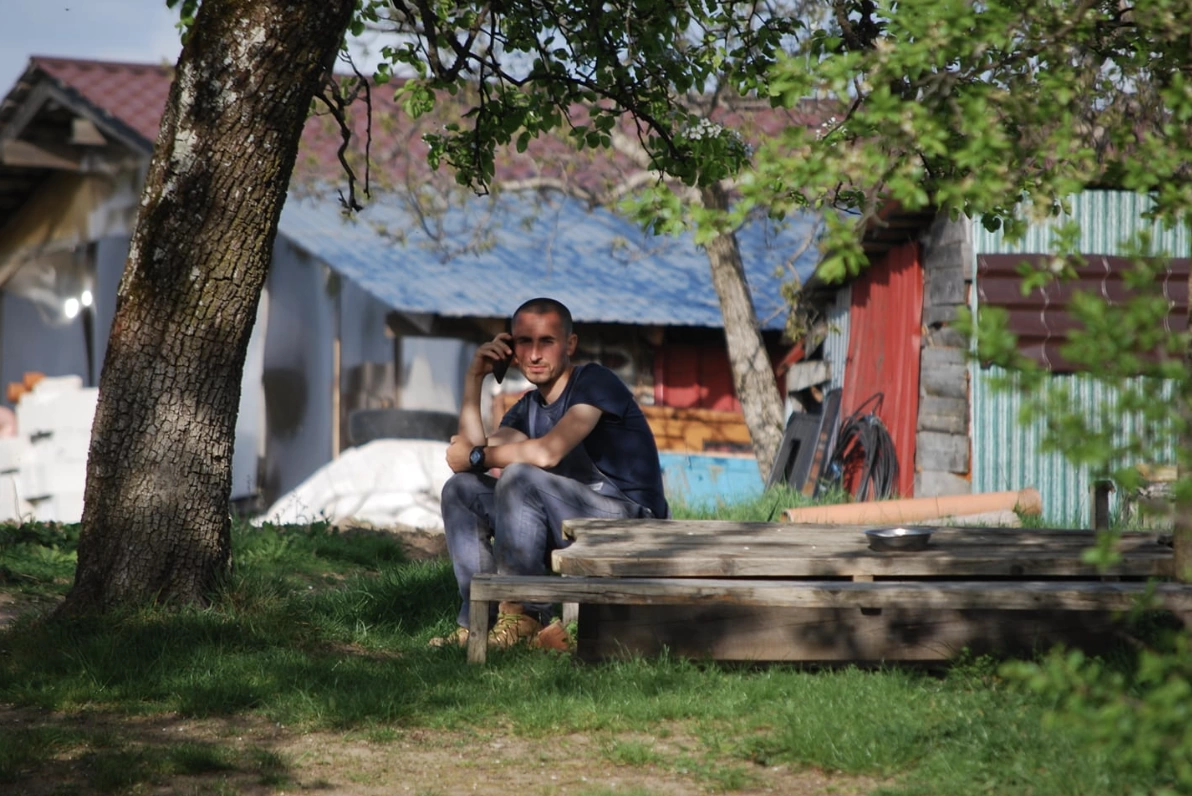
Izabella Varro arrived in Dumbrava de Sus for a class in 2008, at 27-years-old, on the suggestion of a friend. She was undergoing a period of transition, getting ready to quit a job that didn’t fulfill her and leave a relationship, so taking part in a ten-day silent meditation course seemed to her a unique idea. It was a lovely experience, she says, so she returned for another class the following year, and then started attending classes more and more often, as well as staying over to work the land with the community youth. “You felt like you were on holiday at your grandparents’. I think this was what I felt like, that it was as if you had a group of cousins that you saw again each time.”
After months of living there, she’d gotten to a point where she no longer accepted that people outside the community hug her and touch her head, for fear they would give her their karma, because this was what Adi de la Brad taught them. Izabella Varro was a member of the Children of the Sun community for five years, with a few months’ breaks.
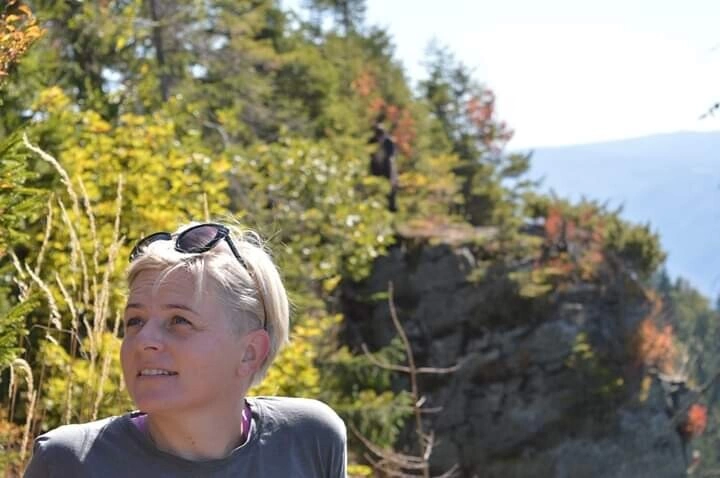
The bewitching. “If everything had been bad since the beginning…”
Cristina Schumacher says she had a gut feeling she didn’t pay attention to, when she met Adi de la Brad. The man asked the 24-year-old woman why she no longer has sex with her boyfriend and other intimate things. “And back then, I didn’t know how to tell someone asking me these questions, ‘I don’t get it, how dare you?’. At the time, he broke me, he made me cry. I was a traumatized child and I’m sure Adi saw this and used it.”
It was also then that she got another hunch she ignored. When she first entered the house, the girls were sleeping on the floor, “in the very mountainside style of the community, of sleeping together, in a shared space, like a family,” and they all had their heads shaved. The word ‘cult’ popped into her mind. “A cult led by a peasant.” Adi told her exactly what he’s still saying to this day, 18 years later, in meditation classes: if your hair is long, the energy seeps out through your hair, past your body, and if you cut it off, the energy goes straight into your body. Shortly thereafter, she also cut her hair. “He preaches shaving so that you feel humiliated and stay put; how could you walk into town with your head shaved, especially as a girl?”
After the first class, she decided to move to Dumbrava de Sus. After ten days of meditating ten hours a day, she went outside. “It was like we were on the moon, the snow was three feet tall. You couldn’t hear a sound, the sky was clear, there was a full moon, too. [...] And Adi was walking past the house and saw me and said, “Look, you know what you have to be like? Like the sun.” Then, it seemed to her that the girls there had this saint-like aura. “So, there was something beautiful there. ‘Cause that’s what it was… this mix. If everything had been bad since the beginning… That’s the ruse.”
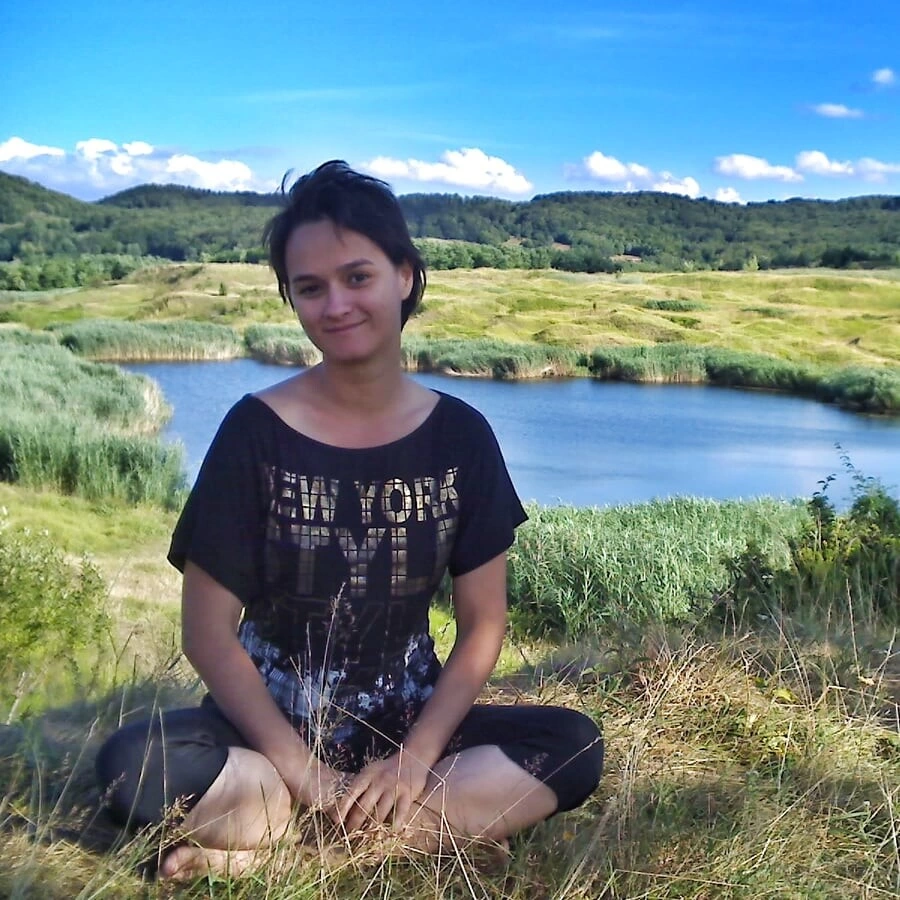
When they moved in with the community, Damia and Sică would hear people who had been living there for many years say that “Adi helped them, saved them, burned their karma.” And, out of a desire to belong to the group, they started adhering to the same set of beliefs. “You don’t even realize it when, in fact, you’re digging yourself deeper into a new system of values. And when you ask yourself questions, you’re told, ‘Well, yeah, man, but that’s just Adi for you, man, that’s what’s right, yeah, man, Adi knows best, well, yeah, but Adi sees everything.’ And then you’re like, ‘Alright, fine, but why did so-and-so leave, then?’ ‘Well, he couldn’t handle the vibration.’”
They were constantly told that the place has an extraordinary energy and only the strong remain there, whereas those who leave are weak. In this way, through reinforcing the belief that they’re above the rest, because they’re capable of staying there, Adi was inflating their spiritual ego, Damia recounts.
The first pangs of doubt. “And that’s when we realized it was kind of bullshit”
Damia was five months pregnant when Adi told her “This child should’ve been mine, Damia, I’ve told you this before.” The young woman had always ignored his sexual advances, yet both she and her partner were bothered by them and felt like Adi was trying to break them up, the same way he did with most couples in the community.
If he disagreed with a certain relationship, and especially if he wanted to be with the woman in a certain couple, Adi would tell the partners they were brothers in a previous life and what they’re doing is incest, as several former members recall. Invoking previous lives as a smoke screen for abuse is a technique applied in other cults as well. Keith Ranier, leader of the US NXIVM cult, who was sentenced to 120 years in prison for sexual trafficking and other crimes, would tell his followers that they were nazis in a previous lifetime and are responsible for murders that occurred during the Holocaust.
Swedish psychologist Håkan Järvå, specialized in cults and himself a former scientologist, explained to me the telltale signs that you’re in a cult or a fundamentalist movement: weakness is condemned and those who can’t handle the imposed pace are to be punished; those who leave the group are deemed the worst; the group holds the truth and the outside world is a dangerous place; there are rules that control basic human needs: money, food, social relations, sleep, and sex.
All these signs are displayed within the Dumbrava de Sus community.
“For Adi, it’s always the woman who has karma and needs to be put in her place. Like he always said, ‘If she doesn’t do what I want, I find myself another one’,” says Marius Căpâlna. If he saw him upset after an argument with Damia, Adi would suggest he find someone else. From the beginning of their relationship, the leader had told him his partner wasn’t suitable for him, because she distracts him from his mission to meditate. Even though the advice seemed innocent, it bore the portance of the community’s spiritual leader.
“If you build a shrine of him inside yourself and all he needs to do is wink at you, this means a lot to you, it influences your decisions and your way of thinking, it slowly, slowly pushes you toward what he wants. This is precisely his art - manipulation,” Sică explains the mechanism through which what Adi told people would often become the law. “He wants people to worship him, he wants to be Adi de la Brad - the second Jesus, this larger-than-life man, spiritual, with super powers, who has lots of women. He stood a lot to gain in this respect, on the sexual side of things. He once told me he would sit up there, in his chair, and open his eyes at the end of the class to see who he could hook up with.”
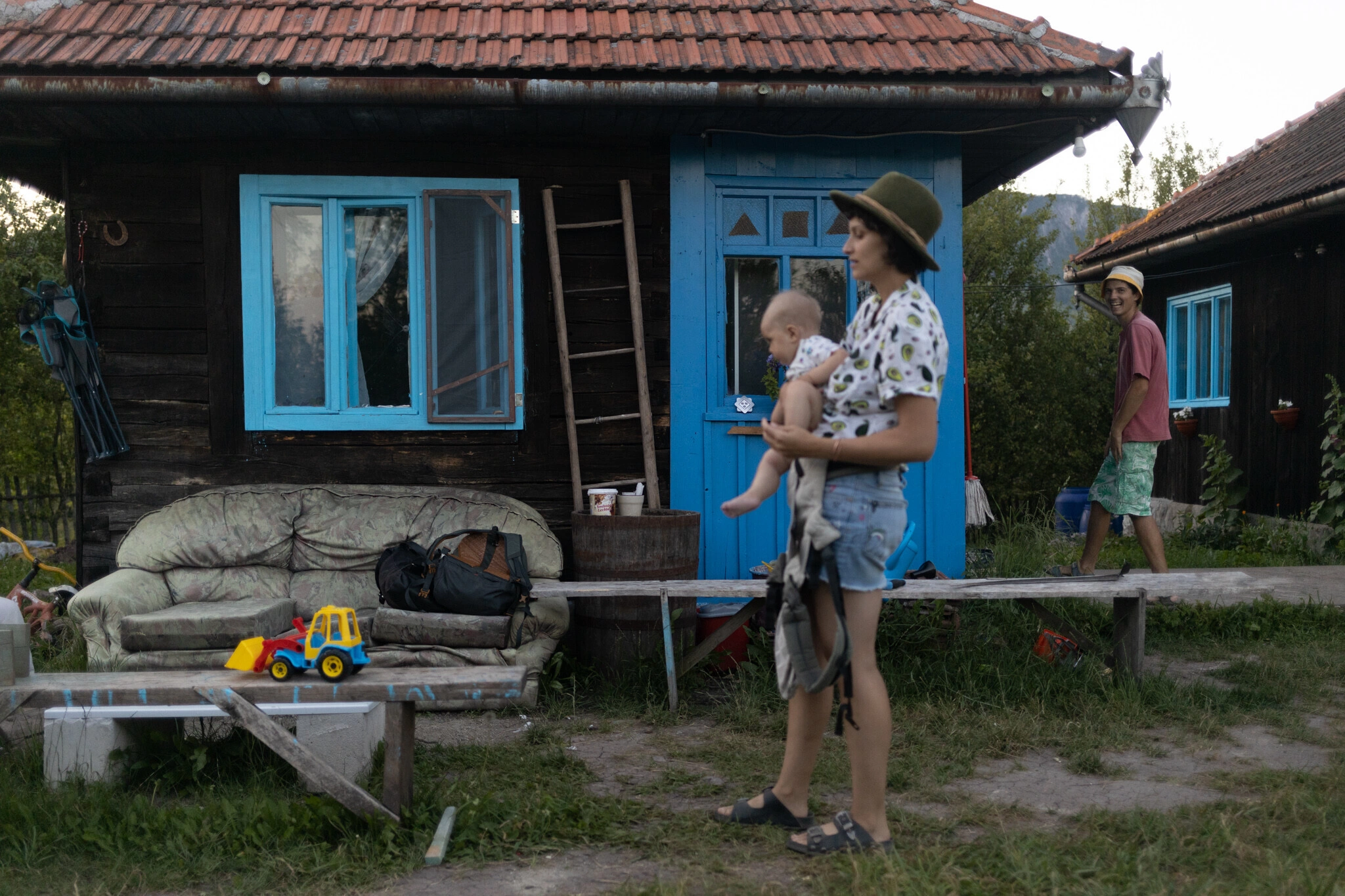
While Adi was flirting with the new students and, at the same time, had many former students as partners, for the community members he would recommend years of sexual abstinence, to clean their karma, or he’d keep close track of the number of their sexual encounters. “Adi would draft a schedule for when me and my partner were allowed to have sex. He’d tell us not to have it on Saturdays and Mondays, because the Moon is doing who knows what and it’s no good,” Cristina Schumacher recalls. She also recounts the experiment that unfurled at Children of the Sun for several years. Adi would not allow fathers to touch their children in the first year of their lives - or the first two, in some cases -, because they could give the newborn their “karma and filth.” “I took part in the children experiment. My partner was not allowed to touch the child until it turned one year old, because he’d steal its vibration.” Sică’s mother was not allowed to visit them in the community or touch his baby until she completed a ten-day meditation course there. “This is a major red flag, too - I mean, in any faith, or religion, everybody’s free to believe in whatever they want, but once it gets to someone imposing their point of view and emotionally blackmailing people, blackmailing their family, that ‘if you don’t do what I tell you to, then I’ll cut you off however I want,’ then it’s wrong. I mean, you tell me you’re all zen and talk about observing nature, but you’re using blackmail. What’s natural and positive and beautiful about that?,” the young father concludes.
Aside from limiting their contact with their parents, Adi also determines community members to desist going to the doctor. “He wouldn’t let me see a doctor throughout my pregnancy. He’d tell me that if I got an ultrasound I would harm the baby. I went for the first time when I was seven and a half months along, because I was already experiencing some spotting and also had contractions and couldn’t handle it anymore,” Cristina recalls. In my previous reporting, Delia Burnham also stated that Adi had told her not to go to the doctor after she’d miscarried, on account of the doctor touching her. Although in theory the women were free and could go if they wanted to, their obedience was an effect of the polarized worldview the leader had inoculated them with, psychologists explain. “The group holds the truth and the outside world is a dangerous place. The only safe environment is the group,” explains psychologist Håkan Järvå.
During Damia’s pre-labor, which lasted for several days, Adi would suggest he could spiritually help her have as easy a delivery as possible. “He said he could tie energies, but Damia’s labor was long, we didn’t even know what to do, and he wouldn’t come around to say anything. He kept saying ‘Meditate with metta.’ He didn’t come over to give me any spiritual advice to help me, nothing. He’d say, ‘It’s alright, Damia will give birth between 2 and four o’clock.’ That’s when we realized that it was kind of bullshit, that he had no control, that he couldn’t do anything,” Sică says. Then, they went to the hospital.
Cult leaders always display sociopath or psychopath traits, says Järvå. “They can lie without remorse and can play different parts, based on what seems appropriate to them in order to get what they want. They also don’t think they’re different from other people, they think the others also deceive and lie in order to get what they want.”
The disenchantment. “Well, that’s it, let’s go”
Damia and Sică decided to leave the community in January, 2021, shortly after the Scena9 article about the Children of the Sun was published.
The turning point for Sică came when he took part in a ten-day course (community members periodically attended classes), during which he meditated the way he felt like doing it, without following instructions. During meditation, his mind kept replaying an episode when Adi had humiliated him right after the birth of his son, for not having taken care of some seedlings. “He called me all sorts of names, I felt very abused, could barely talk, felt my pulse inside my skull, I was all sweaty. It’s not normal to feel slammed to the ground when a stranger berates you. He, the almighty, the spiritual master, doesn’t care that he’s taking it out on a father who went through five days of labor with his wife.” Although months had passed since, during which time he had tried to empathize with the community leader, he hadn’t managed to. What he had done then, as well as on several other occasions, struck him as unacceptable and he was no longer willing to put up with Adi de la Brad’s abusive behavior.
On the morning of January 10, 2021, Damia and Sică once again discussed their child’s future, as well as all the frustrations they had accumulated - she in her two and a half years spent there, and he in four and a half years. They eventually said to each other, “Well, that’s it, let’s go.” The fact they mutually supported each other gave them strength to let go of the community, says Damia. People are usually torn apart by Adi and don’t trust themselves when they realize the abuse. That’s why she thinks it’s important they discuss what’s eating at them with their partners or close friends.
When they made the decision to leave the community, Damia burst into tears. She realized she was going to leave behind people and a place that had grown on her. “I had somehow built a life there and I was terrified of starting over again. I had invested a lot there, in all respects, including our money.” She and Sică had saved up EUR2,000 from the royalties Damia was getting from the videos she had featured in, as well as from the child’s state allowance. They had initially planned to invest it in their house within the community, whose foundation had already been built, but were now going to use it to start a new life. “Think of your possibilities. This, considering we didn’t know whether or not our families would help us out.”
When they called their parents to give them the news, they rejoiced, as they had never agreed to them moving there and were very worried that their children had grown apart from them and had changed completely. They told Adi, “‘Well, Adi, we’ve decided to leave.’ He said, ‘Alright, it would be best if you left.’ He didn’t have a single good word for us,” Sică remembers.
Cristina Schumacher decided to leave Children of the Sun in autumn 2015. She had gone home to spend a few days with her ailing mother. Adi kept calling her to hasten her return for sunflower picking season. When she told him she wasn’t going to do that, but that she would take care of the children’s schooling instead, Adi made fun of her. “‘Oh, come on, school’s going to be out eventually.’” Adi would oftentimes interrupt classes and call the children to harvest the corn or perform other types of farmwork. He’d tell them that education isn’t worth anything anyway, since “the war is going to start” one day. Cristina believes that ever since Russia invaded Ukraine, Adi, a “staunch Putinist,” is saying “‘I told you so!’”
After getting off the phone with Adi, Cristina started crying and told her mother about all the abuse she had endured for eleven years. “Mom, I’m not going back. I’m going there to get my child and that’s the end of that.” Shortly before this, Cristina had worked up the courage to refuse to have sex with the leader, as the abuse had continued to escalate. “Adi started having the nerve to threaten me with impregnating me without my knowledge; or with immobilizing me and forcing me to have anal sex.” Consequently, “when I talked back against some random accusations hurled at me, he threatened he’d set the camper van I was living in on fire.”
Cristina’s father drove her to a place close to Dumbrava de Sus that can be reached by car and she hiked for fifteen minutes on her own, through the forest that leads to the Children of the Sun. “Adi wasn’t there, he was hiding. I was greeted by R., P., G., one of them was filming me with a camera, she followed me around everywhere with that camera, as if I were a thief. These are intimidation techniques,” Cristina recalls. “Do you want to come along with your mom?,” she asked her son. “Yes.” In a phone call beforehand, she had informed her child, her partner, and Adi that she was going to come pick up her son and says that Adi had tried to convince the little one to stay on with his father. “‘Adi told me to tell you that I didn’t want to go to school’,” the boy had told her through tears. To her surprise, her partner, who had said he’d be joining them, changed his mind.
For Izabella Varro, the end came in 2013, when she took an official Vipassana course in Austria. Before beginning the meditation, she was afraid of what might happen to her there, as Adi had convinced her that there is no trace of spirituality in the courses offered by the dhamma network. “I was annoyed at myself for being afraid and I told myself, ‘Man, what the hell, I’m a fully grown adult, what’s with this lack of autonomy and critical thinking? You walk in there and if you don’t like it, you’re off, what could those people do to you?’” She walked into the class and realized it was completely different from her practice at Dumbrava de Sus. “There was none of that Orthodoxy that Adi had mixed in with guilt, punishment, karma, with ‘something bad will happen to you.’” She decided not to return to the mountainside community, although she, too, found it difficult to part ways with the people she’d grown fond of over the five years they had spent together. “I left feeling furious at the lies, don’t lie to me that you’re teaching Vipassana, when what you’re teaching is hodgepodge. Don’t walk into the room claiming miracles and shit, when you claim you’re doing something for me,” she seethes at an imaginary Adi.
Lucian Țurlică left in December, 2020, when he says Adi chased him off after two years of living there. One day, as he was helping out in the kitchen, he suddenly felt sick. “I was having some weird episodes and I started to lose control, delirious thoughts, hallucinations.” Some of the guys in the community drove him to his sister in Bucharest, and she accompanied him to a psychiatric hospital, to which he was admitted for a few weeks. After being released, he called Adi to ask if he could return to the Children of the Sun, but he recalls the man telling him it was time to visit his parents. Lucian felt rejected from the community for being ill. “As long as I busted my ass working there, I was one of his favorites. I worked and I was welcome. After something happens and you're no longer fit for work, you fall from grace,” the young man sighs.
Back to society
Damia and Sică recall it was “real hard” for them to readjust to life within society, even though their parents welcomed them into their homes and also provided financial aid.
The worldview at Dumbrava de Sus had made a mark on them and it took them a while to shake off the beliefs, gestures, and phrases acquired there. For instance, Adi had often told them that if they felt unwell or if things were going badly, it was their colleagues’ fault for having karma and not meditating enough, or their own, for also not meditating enough.
Their new thought pattern became even more obvious when they started interacting more often with old friends and people on the outside, whose gestures were natural. “Think about it: someone would come along and touch Amza and my first thought was that they were taking away his energy, you know what I’m saying?”, says Sică.
Last summer, Damia set out to post a YouTube video in which she recounted their experience at Dumbrava de Sus. Although she was determined to do this, before posting it, the fears cemented by Adi would pop into her mind. “What if something happens to Amza, what if he sends the creatures after us? All the things they put in your subconscious come out.” Several members state that Adi threatened former members by saying that if they said negative things about him or the community, he would send spirits to haunt them, have their phones tapped - he allegedly has connections within the national intelligence service -, a car would run them over, or other bad things would happen.
The hardest thing for Damia and Sică was to recalibrate their life path. They knew they wanted to continue living in nature, somewhere in the mountains, so they visited several villages in the Apuseni mountains, looking for an old house they could refurbish. Their budget was small, but they received help in the form of money, construction materials, and physical labor from their families and friends, to whom they feel grateful.
When they left, some of the community members told them they’d come back, because that’s what others before them had done. “Because after Adi closed all your gateways into the world that you had before, your friends and everything, when you return to society, there’s no one waiting for you there; and since you were arrogant to people, telling them you meditated, while they’re unable to take a single class, it’s their turn to say, ‘Go off to your center, now you’re coming to me for help?’”
Cristina Schumacher, who left the community after eleven years of living there, initially returned to her mother’s place with her son. She was a 35-year-old single mom with nothing to her resume except for a university degree. Both her former partner and Adi threatened her that she and the child would become ill or even die for having left the place and for no longer being “energetically protected.” Financially, she was helped by her mother, her friends, and a backlog of uncollected child allowances. She enrolled the boy in first grade at 9 years-old. She explained as best she could what a cult was and advised him not to blame his father for staying behind in the mountains and not joining them. “I told him he was in a state where he can no longer think with his own mind, words are being put in his mouth, he’s being manipulated, and that’s what I was like to; that I managed to get out for his sake, so he doesn’t grow up to be a slave.”
She then decided to use her skills, regardless of her lack of formal experiences. She spoke German and other foreign languages well and could sing, so she looked for a job in Germany, where she relocated with her child. She continued to receive phone calls and messages from her former husband, who claimed her new partner would sexually abuse their child.
For many years, Izabella Varro felt the need for closure and wanted people who had lived in Dumbrava de Sus to publicly speak about what they had found within the community. She wanted to tell others: “If you’re looking for something spiritual, don’t go there. Or, if you’re looking for something spiritual and still haven’t figured out what planet you’re living on and what extraterrestrial beings you’re connected with, go there and look for it, ‘cause you’ll find them. But don’t call it Vipassana.”
Now
It’s a soft October afternoon and the sunlight looks like a lighthouse beam through the trees. Sică is chopping wood, because it’s already cold enough at night to build a hearth fire, while Damia is picking apples with Amza in her arms. The three of them are behind their house in a village in Bihor county. Both the house and the area bear a striking resemblance to the place where the Children of the Sun live. The road there isn’t paved, it’s surrounded by hilltops, and the house is old, in need of repair. It’s quiet around and you can only see a few scattered houses. At night, the stars in the sky are packed in close to each other.
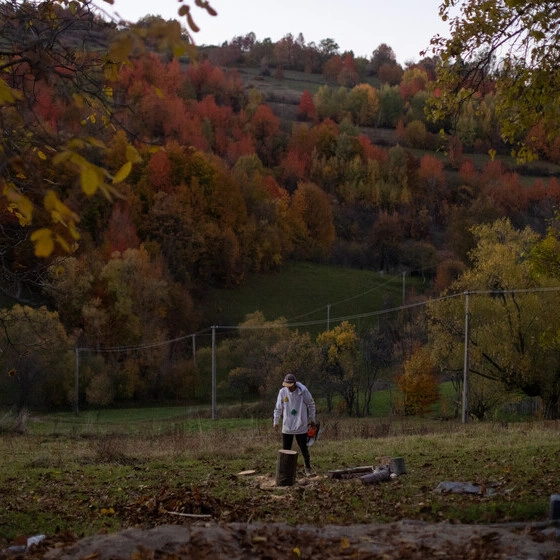
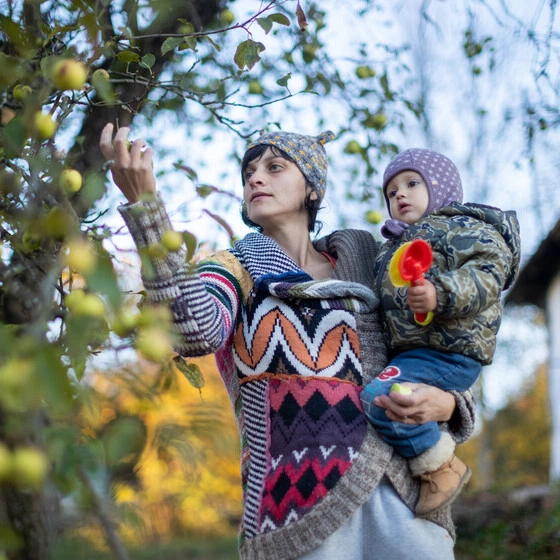
Damia and Sică are happy they finally have their own home at the heart of the mountains and are working to add on a kitchen and a bathroom, as well as to refurbish the barn. For now, they’re living on the royalties that Damia is still receiving from her work as an artist, as well as on two-year-old Amza’s state allowances. In addition, they both do a bit of handy work. Damia is selling lotions she makes herself and Sică does woodwork that includes light fixtures and children’s swings. In the future, they plan to open a woodworking workshop where they can teach the craft to both adults and children. They would also like to organize camping trips to teach kids how to sculpt wood, dance, and hike. They plan to enroll Amza at the village kindergarten, because they know now he could use being integrated in a group. Damia sometimes travels to Bucharest for various musical collabs, whose number she hopes will increase.
Lucian Țurlică has a part time job at a food delivery service and has enrolled in nursing school. He says he’s getting better “with every day.”
Izabella Varro is working as a psychologist and her community experience initially left her with a sense of shame for having believed Adi de la Brad’s nonsense. She’s heard other former community members talk about this sense of shame - she is now counseling them as a therapist. She has also seen all of them display a fear of openly talking about their negative experiences at Dumbrava de Sus. “Man, why aren’t we speaking up? I know a father who left his kids there and never spoke about it. I think there’s also this fear of all the information surfacing, because that would stir up all the shit. If your child is in there, you don’t know how this will reflect on the child. [...] This is exactly what keeps Adi’s story going.”
Cristina Schumacher now lives in Germany with her son and current husband, working as a translator and in children’s music. She specializes in poetry translation and writes songs at her own studio for music and dance schools around the world. She wants to tell everyone that you can leave cults and you can “deprogram and set yourself up for success in society your own way.” When she looks behind, she recalls the post-departure turning point. “When I left the center, I didn’t leave a cult, I left a community, because I was feeling trampled on there. Two or three weeks later, I realized I had been in a cult. When I was there, I’d say, ‘The others don’t understand. We are visionaries, we’re pioneers.’ Adi would say, ‘We are outlaws, we’re creating a new human race, people will be talking about us in a hundred years’ time.’”
She spent a long time blaming herself for spending eleven years of her life at Children of the Sun. She couldn’t understand why she hadn’t left earlier, but during therapy sessions, she realized she was lacking someone to share her doubts. And she blamed herself for something else, too. “I unwittingly took part in growing the cult and fulfilling Adi’s dream. That was the hardest thing for me to accept - not only did I waste eleven years of my life and the energy of my youth, but I also took part in the lie with all the energy I had. I’m sorry about the people I took there. Plus others who saw me in the chair, felt inspired, and moved there.”
After leaving a cult, former members can experience mental issues, Swedish therapist Håkan Järvå explains. It depends on how much time they spent there, how much abuse they endured, and how resilient they generally are in the face of negative experiences, he says. “Some people experience very grave symptoms and can even experience psychosis. Many deal with depression. Some simply frantically stray from all the rules they observed within the group and can develop addictions for this reason,” Järvå explains. “A mistrust of others is another common symptom afterward.” Healing usually takes as much time as you spent within the cult, the psychologist concludes.
“Dear beloved, this spring we will be holding two more beginners’ courses (first and second part), also with a limited number of seats. Then, if the weather allows it, we’ll move on to farming. We will inform you of news as it comes up, in due time.” That’s the last email I received in late February from the meditation center in Dumbrava de Sus.
Cristina Schumacher would like to tell future Children of the Sun that meditation and life within the community are strongly connected. “The classes are built on blood and sweat, on abuse, on unpaid people, on modern slavery.”
Translated from the Romanian by Ioana Pelehatăi.

